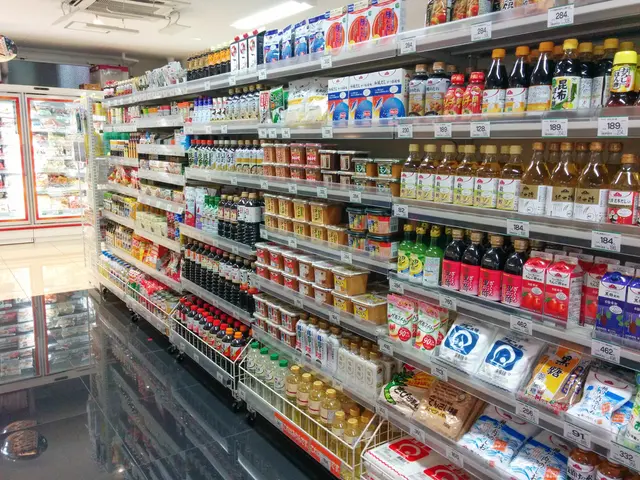Proposal for establishing a fashion materials center to propel Vietnam's leather and textile industries
Vietnam is making significant strides in establishing a major innovation, research, and development (R&D), and trading centre focused on fashion materials. This strategic project, named the Vietnam Fashion Supply Chain Research and Development Centre, is set to be located in Ho Chi Minh City and cover over 40 hectares [1].
The centre will serve seven core functions, including strengthening connections across the fashion supply chain, showcasing and testing new materials and technologies, providing spaces for creativity and R&D, organizing exhibitions and industry events, offering training and consulting services, promoting sustainable fashion and technology adoption, and facilitating international cooperation and export growth [1]. The aim is to create a comprehensive support hub for enterprises, encouraging collaboration to elevate Vietnam's supporting industries and make them more resilient, competitive, and capable of generating greater value-added products [1].
Simultaneously, Vietnam is working towards increasing the localization rate in textile and garment production, particularly in fabric production and dyeing. The localization rate is projected to reach 45-50% in 2025, as the country traditionally relies heavily on imported fabric, yarn, and accessories, mainly from China [2]. To address this, Vietnam is attracting foreign direct investment towards high-tech, value-added stages of production such as weaving, dyeing, and synthetic fiber manufacturing [2].
Nguyen Thi Thanh Xuan, Vice Chairwoman and Secretary General of LEFASO, emphasized that building a local supply of raw materials is crucial for long-term growth and attracting more orders [5]. If established, the centre could potentially supply materials not only to Vietnam but also to countries in the region like Indonesia, Cambodia, and Bangladesh [6].
The proposed centre aims to address the issue of heavy reliance on imported materials in the leather and footwear sector, strengthen the domestic supply chain, and enhance the competitiveness of the leather, footwear, textile, and garment industries in Vietnam [7]. Xuan also called for the Ministry of Industry and Trade and other relevant agencies to design a comprehensive policy framework to encourage participation across sectors [8].
The development of the centre requires breakthrough policies and strong government support to come to fruition [9]. The centre is proposed as a joint effort by LEFASO, the Vietnam Textile and Apparel Association, and the Vietnam Timber and Forest Products Association [4].
Industry events like Intertextile Shanghai Apparel Fabrics, which focus on sustainability and digitalization, provide platforms for innovations to be exchanged and new partnerships to be formed, indirectly supporting the modernization of Vietnam’s textile and garment industries as they face global challenges such as US tariffs and climate concerns [3]. Individual companies like Mei Sheng Textiles in Vietnam are also growing through partnerships that enable the production of high-quality, diverse yarn products meeting international standards [4].
In summary, Vietnam’s efforts to develop a centralized innovation and R&D centre dedicated to fashion materials are well underway, supported by rising localization rates, foreign investment in modern high-tech textile production, and industry-wide moves towards sustainable and innovative practices. This initiative is expected to significantly strengthen local supply chains, improve global competitiveness, and contribute to sustainable industry growth in leather, footwear, textile, and garments.
- The Vietnam Fashion Supply Chain Research and Development Centre, located in Ho Chi Minh City, will facilitate international cooperation and export growth, with potential supply of materials to countries like Indonesia, Cambodia, and Bangladesh.
- To address the issue of heavy reliance on imported materials, the centre aims to strengthen the domestic supply chain in sectors like leather, footwear, textile, and garment, enhancing their competitiveness.
- The government's strategic project, encompassing seven core functions, aims to create a comprehensive support hub for enterprises, promoting sustainable fashion and technology adoption, and encouraging collaboration.
- Simultaneously, Vietnam is working towards increasing the localization rate in textile and garment production, particularly in fabric production and dyeing, with the goal of reaching 45-50% in 2025.
- Breakthrough policies and strong government support are needed for the centre's development, recognizing it as a joint effort by LEFASO, the Vietnam Textile and Apparel Association, and the Vietnam Timber and Forest Products Association.
- Industry events focusing on sustainability and digitalization, such as Intertextile Shanghai Apparel Fabrics, provide opportunities for innovations to be exchanged and partnerships to be formed, supporting the modernization of Vietnam’s textile and garment industries.




